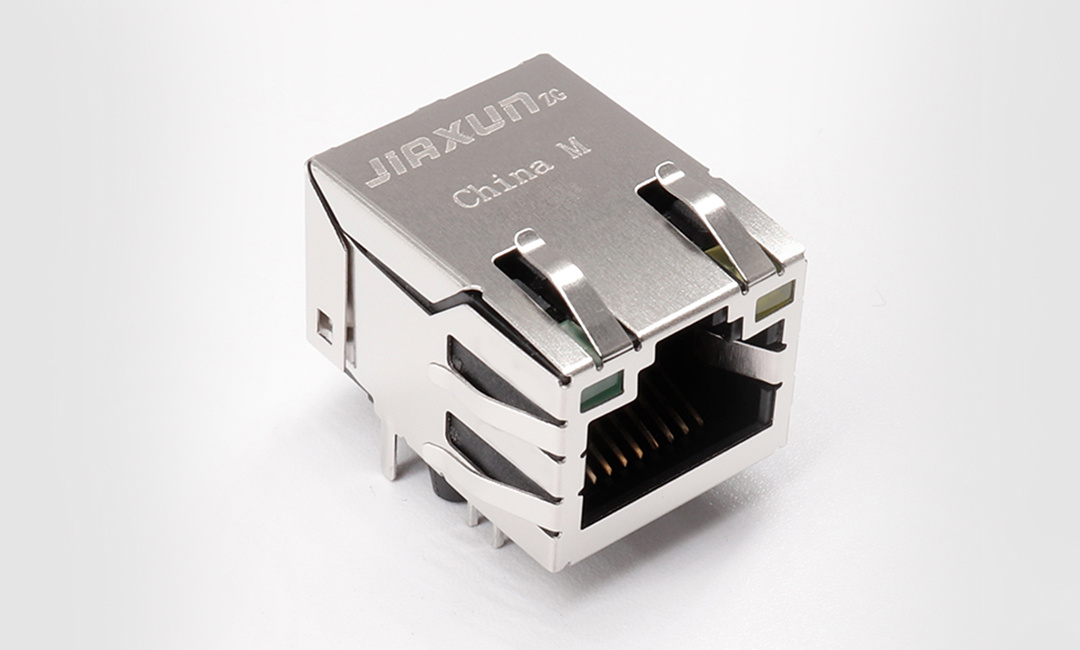07
2025
-
06
RJ45 connector jumper wire production, information module termination, and testing experiment report
Author:
Experiment Objective
Master the method of making RJ45 patch cords and familiarize yourself with the T568A/T568B wiring standards.
Learn the termination techniques of network information modules (such as patch panels or panel modules).
Master the method of using a cable tester to test the connectivity of patch cords and modules.
Understand the twisted-pair cabling standards and troubleshooting techniques.
Experimental Equipment and Materials
Cat5e/Cat6 Unshielded Twisted Pair (UTP) Cable
RJ45 Crystal Head
Information Module (e.g., 86-type network panel module)
Crimping Tool (with wire cutting, stripping, and crimping functions)
Cable Tester (Continuity Tester)
Punch Down Tool (for module termination)
Wire Stripper
Straight-through or Crossover Cable Wiring Diagram
Experimental Steps
I. RJ45 Patch Cord Making (T568B Standard)
Stripping
Use a wire stripper to remove about 2-3cm of the outer sheath of the twisted-pair cable, exposing the four pairs of twisted cores. Be careful not to damage the insulation of the inner conductors.
Wire Arrangement
Arrange the four pairs of twisted-pair wires according to the T568B standard (orange-white, orange, green-white, blue, blue-white, green, brown-white, brown), and straighten the cores.
Trim the Wire Ends
Keep the core length at about 1.5cm, and use the wire cutter of the crimping tool to trim the wire ends, ensuring that all cores are even.
Insert into Crystal Head
Insert the sorted cores into the RJ45 crystal head, ensuring that each core reaches the front end and the outer sheath enters the end slot of the crystal head.
Crimping
Use the crimping tool to crimp the crystal head, allowing the metal contacts to pierce the core insulation and complete the electrical connection.
II. Information Module Termination
Stripping and Separating Wires
Remove about 5cm of the outer sheath of the twisted-pair cable, separate the pairs according to the T568B standard and arrange them.
Insert into Module
Insert the cores into the corresponding slots according to the module color code (usually marked with A/B wiring standards), ensuring that the wiring order is consistent with the module markings.
Punch Down and Secure
Use a punch down tool to press the cores into the metal contacts of the module and cut off the excess wire ends. Check if the cores are fully inserted into the slots.
III. Connectivity Test
Patch Cord Test
Insert both ends of the finished patch cord into the RJ45 interface of the cable tester.
Observe the indicator lights on the cable tester: If lights 1-8 light up sequentially, it indicates that the wiring is correct and connected; if the light sequence is incorrect or the lights are off, there is an open circuit, short circuit, or wiring error.
Module Test
Use a patch cord to connect the module and the cable tester to test whether the module termination is successful.
Experimental Results Record
| Test Object | Wiring Standard | Test Result (Normal/Fault) | Fault Phenomenon and Cause Analysis |
|---|---|---|---|
| Patch Cord 1 | T568B | Normal | Lights 1-8 light up sequentially |
| Patch Cord 2 | T568A | Fault | Lights 3 and 6 are off (wiring error) |
| Module 1 | T568B | Normal | All wire pairs are connected |
Problem Analysis and Solution
Incorrect twisted-pair arrangement
Phenomenon : The cable tester light sequence is incorrect or some lights are off.
Solution : Rearrange according to the standard, ensuring that the cores are fully inserted into the crystal head.
Poor crimping resulting in poor contact
Phenomenon : Some lights flicker or intermittently connect.
Solution : Recrimp the crystal head with the crimping tool.
Module termination cores not fully inserted into the bottom of the slot
Phenomenon : A certain wire pair is not connected during testing.
Solution : Use a punch down tool to repress the cores.
Experimental Conclusion
Successfully mastered the T568A/B wiring standards and RJ45 patch cord making techniques.
Information module termination requires strict adherence to the color code, and the punch down force should be moderate to avoid damaging the contacts.
The cable tester can quickly locate common faults such as open circuits, short circuits, and wiring errors.
In actual engineering, straight-through cables (device-switch) or crossover cables (device-device) should be selected according to the device type.
Discussion Questions
What are the differences in the application scenarios of straight-through cables and crossover cables?
Answer : Straight-through cables are used to connect devices on different layers (e.g., computer-switch), while crossover cables are used for direct connection of devices on the same layer (e.g., computer-computer).
If the test meter shows that lights 1 and 2 are not lit, what could be the reason?
Answer The orange-white (1) and orange (2) wires are open or have poor contact.
References
TIA/EIA-568-C.2 Commercial Building Telecommunications Cabling Standard
Network Integrated Cabling Technology (Textbook)
RJ45,RJ45 connector
07
2025-06
RJ45 Jack Supplier Guide: Technical Analysis and Innovation Solutions from Jiaxun Smart Technology
07
2025-06
Gigabit RJ45 Connector — Core Components and Selection Guide for Enterprise Network Upgrades
07
2025-06
07
2025-06
RJ45 connector jumper wire production, information module termination, and testing experiment report
06
2025-06
Ethernet Transformer Wholesale: Core Component Analysis and Efficient Supply Chain Collaboration
06
2025-06
06
2025-06
SFP Optical Module—The Core Engine and Market Opportunities of High-Speed Network Interconnection
Contact Us
Factory add: NO.54. Jinhu South Road, Chenjiang Town, Zhongkai Hi-tech Zone, Huicheng District, Huizhou city, China
Telephone:0752-2099791
Office add: B901-1, Silver Star Hi-Tech Building, No. 1301 Guanguang Road, Longhua District, Shenzhen, China
Website:www.jiaxunzg.cn
Telephone:0755-81752121
Fax: 0755-81752963
Mailbox:sales1@jiaxunzg.cn
Mailbox:sales2@jiaxunzg.cn
Mailbox:sales3@jiaxunzg.cn
Copyright © 2024 Jiaxun (Huizhou) Intelligent Technology Co., Ltd. Privacy Policy

